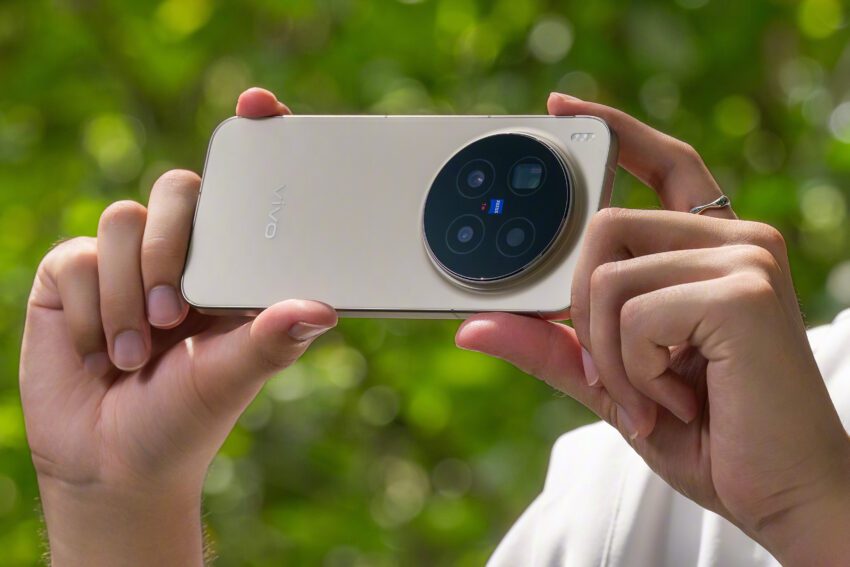
vivo x300 pro launches with an ultra-rivaling Vivo has unveiled its latest flagship smartphones, the X300 and X300 Pro, featuring advanced camera technology that aims to rival its premium Ultra models.
vivo x300 pro launches with an ultra-rivaling
Camera Innovations and Specifications
Vivo has consistently focused on camera technology in its flagship devices, and the X300 series is no exception. Both the X300 and X300 Pro come equipped with Zeiss-branded cameras, a hallmark of Vivo’s commitment to high-quality imaging. The standout feature of these new models is the introduction of a 200-megapixel HPB imaging sensor, developed in collaboration with Samsung. This sensor is designed to enhance image quality significantly, particularly in challenging lighting conditions.
X300 Pro Camera Features
The X300 Pro utilizes the 200-megapixel sensor for its telephoto camera, which is equivalent to an 85mm lens. This setup offers specifications that closely match those of the X200 Ultra’s industry-leading telephoto capabilities. However, the X300 Pro’s telephoto lens has a slightly slower aperture of f/2.67, which may impact low-light performance compared to its predecessor.
In contrast, the main camera on the X300 Pro features the Sony LYT-828 sensor, which is the successor to the sensor found in the X200 Ultra. This new sensor boasts a faster aperture, potentially delivering superior image quality. While the ultrawide camera on the X300 Pro is a step down from the X200 Ultra, utilizing a smaller sensor, it still supports 4K video recording at 120fps with 10-bit Log capabilities. This allows for high-quality video capture, making the X300 Pro a compelling option for content creators.
X300 Camera Features
The regular X300 model also impresses with its camera setup. It employs the same 200-megapixel Samsung sensor for its main camera, paired with a fast f/1.68 aperture. This configuration is designed to capture stunning images with excellent detail and clarity. Additionally, the X300 features a 50-megapixel telephoto lens and a 50-megapixel ultrawide lens, along with a 50-megapixel selfie camera. This robust camera lineup ensures that users have a versatile photography experience, whether they are shooting landscapes, portraits, or selfies.
Telephoto Extender and Photography Kit
Both the X300 and X300 Pro support a new telephoto extender, a 2.35x lens that can be attached to the phones’ existing telephoto lenses using a dedicated case and mount. This feature was first introduced with the X200 Ultra earlier this year and has now been made available for the X300 series. The telephoto extender allows users to capture extraordinary long-range shots that are typically beyond the capabilities of standard smartphone cameras.
Vivo has also bundled the telephoto lens with a larger Photography Kit, which includes the mounting case and a camera grip with a built-in battery pack. This kit enhances the overall photography experience, making it easier for users to stabilize their shots and extend their shooting time without worrying about battery life.
Performance and Specifications
Under the hood, both the X300 and X300 Pro are powered by MediaTek’s flagship Dimensity 9500 chipset, which competes directly with Qualcomm’s Snapdragon 8 Elite Gen 5. This powerful processor is designed to deliver exceptional performance, whether users are gaming, multitasking, or using demanding applications.
In addition to the chipset, both models share several other specifications. They support 90W wired charging and 40W wireless charging, ensuring that users can quickly recharge their devices. The X300 and X300 Pro also boast impressive durability ratings, with IP68 and IP69 certifications, making them resistant to dust and water. Furthermore, both devices feature ultrasonic fingerprint sensors for secure and convenient unlocking.
Design and Display
When it comes to design, the X300 Pro is a larger device, featuring a 6.78-inch display, while the regular X300 has a more compact 6.31-inch screen. Despite their different sizes, both phones maintain a slim profile, measuring less than 8mm in thickness. The X300 is slightly thinner at 7.95mm, making it a more comfortable option for users who prefer smaller devices.
Vivo has made interesting claims regarding battery life as well. The X300 Pro is equipped with a 6,510mAh silicon-carbon battery, while the X300 features a 6,040mAh battery. Vivo asserts that these batteries, due to efficiency optimizations, can deliver comparable longevity to larger 7,500mAh and 7,000mAh cells found in other smartphones. This claim will be put to the test as users begin to evaluate the real-world performance of these devices.
Pricing and Availability
Both the X300 and X300 Pro are currently available for order in China, running on the new OriginOS 6, Vivo’s customized version of Android. The X300 is priced starting at ¥4,399 (approximately $620), while the Pro model starts at ¥5,299 (around $745). The telephoto lens is sold separately for ¥1,299 (around $180), or as part of the full photography kit for ¥1,499 (approximately $210).
Future Prospects and Global Launch
While Vivo has not confirmed specific plans for a wider release of the X300 series, the company typically launches its flagship models in other Asian markets and select European countries. Notably, Vivo has also announced that the new OriginOS will be available outside of China, finally replacing the less popular Funtouch OS that has been used in international markets for several years. This move is expected to enhance the user experience for customers outside of China.
Looking ahead, there are indications that an X300 Ultra may be on the horizon, likely launching in early 2026. However, Vivo will need to differentiate this model from the X300 Pro to justify its existence in the lineup. The success of the X300 and X300 Pro may set the stage for how the Ultra model is received, as consumers increasingly demand innovative features and superior performance from their smartphones.
Conclusion
The Vivo X300 and X300 Pro represent a significant step forward in the company’s flagship offerings, particularly in terms of camera technology and overall performance. With their impressive specifications, innovative telephoto capabilities, and sleek design, these devices are poised to attract attention in the competitive smartphone market. As Vivo continues to refine its software and expand its global presence, the X300 series may well become a benchmark for future smartphone releases.
Source: Original report
Was this helpful?
Last Modified: October 13, 2025 at 7:36 pm
0 views















